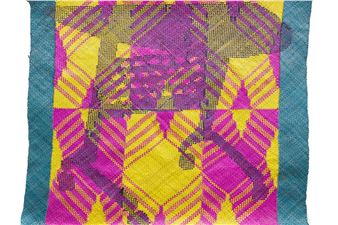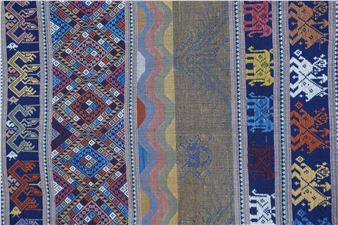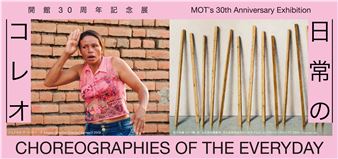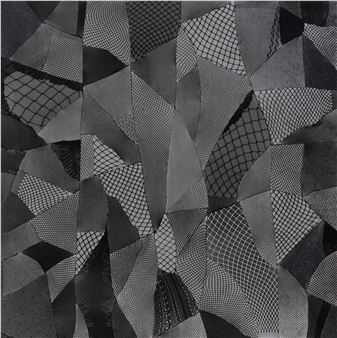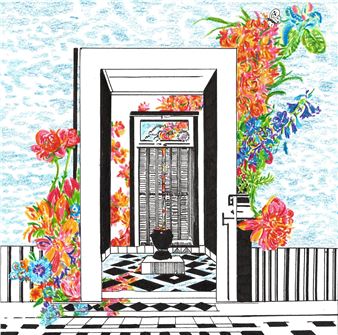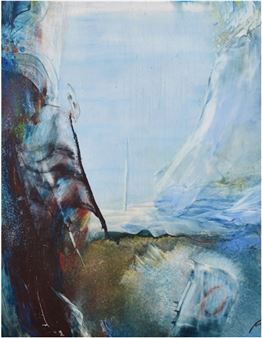Like Dracula dodging the Cross
“Television is conversant on a million topics and broadcasts itself as an exquisite generalist, an encyclopedic skimmer that avoids specificity like Dracula dodging the Cross. It flaunts a fluency in more than a few languages and speaks in hundreds of voices, juggling gender and race like a spirit trying on bodies for size, like a manic quick-change artist on a binge.”—Barbara Kruger, “September 1989” in Remote Control, The MIT Press, 1993 [1989], p. 48
Taken from artist Barbara Kruger’s column on television that was published regularly in Artforum, this excerpt shrewdly dissects television’s versatility (in contents, genres, and rhythms), a quality that is as much a strength as it is a flaw. TV, we are told, “avoids specificity like Dracula dodging the Cross”. Through this visually evocative metaphor, Kruger describes the ever-changing flow of programs on TV, simultaneously revealingthe scope of its influence. When her text was published in the late 1980s, television’s reach seemed particularly tentacular—whether geographically, linguistically, or thematically—making it an inexhaustible source for artists exploring the socio-political breadth of image-making, such as Kruger herself.
Today, television’s modes of production and reception have changed, even its physical form has been altered, slimmed, and flattened. The technology’s rapid change has instigated today’s digital screen-culture, yet analog television and its aesthetics persist as references, notably in the practices of artists born between the 1980s and late 1990s1. Like Dracula dodging the Cross gathers works by Mona Benyamin, Deniz Eroglu, Hilary Galbreaith, Ndayé Kouagou, Rayane Mcirdi, Gaspar Willmann, and Hoy Cheong Wong— seven artists who continue to interrogate TV with fascination, skepticism and nostalgia. They use, appropriate, and disturb TV’s functions, as well as its visual and discursive codes. These artists subvert the assumption that TV constitutes a “universal” cultural reference, injecting linguistic, visual and musical elements that relate to specific cultural contexts, geographical or political positionings. Taking advantage of the immediacy of TV’s aesthetics and grammar, they weave within them tales of diasporic transmissions, alternatives and parodies to colonial histories, or reflections on misinformation and cultural appropriation. Disguised under TV’s format, these narratives rely on the imagery’s accessibility to produce a critical discourse, but one that is resolutely imbued with a sense of nostalgia towards a highly familiar object.
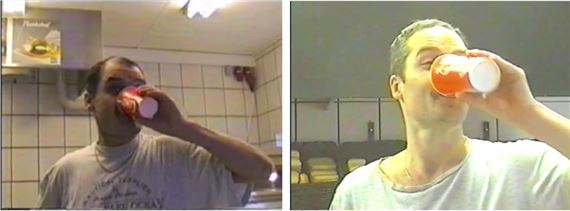
Recommended for you
“Television is conversant on a million topics and broadcasts itself as an exquisite generalist, an encyclopedic skimmer that avoids specificity like Dracula dodging the Cross. It flaunts a fluency in more than a few languages and speaks in hundreds of voices, juggling gender and race like a spirit trying on bodies for size, like a manic quick-change artist on a binge.”—Barbara Kruger, “September 1989” in Remote Control, The MIT Press, 1993 [1989], p. 48
Taken from artist Barbara Kruger’s column on television that was published regularly in Artforum, this excerpt shrewdly dissects television’s versatility (in contents, genres, and rhythms), a quality that is as much a strength as it is a flaw. TV, we are told, “avoids specificity like Dracula dodging the Cross”. Through this visually evocative metaphor, Kruger describes the ever-changing flow of programs on TV, simultaneously revealingthe scope of its influence. When her text was published in the late 1980s, television’s reach seemed particularly tentacular—whether geographically, linguistically, or thematically—making it an inexhaustible source for artists exploring the socio-political breadth of image-making, such as Kruger herself.
Today, television’s modes of production and reception have changed, even its physical form has been altered, slimmed, and flattened. The technology’s rapid change has instigated today’s digital screen-culture, yet analog television and its aesthetics persist as references, notably in the practices of artists born between the 1980s and late 1990s1. Like Dracula dodging the Cross gathers works by Mona Benyamin, Deniz Eroglu, Hilary Galbreaith, Ndayé Kouagou, Rayane Mcirdi, Gaspar Willmann, and Hoy Cheong Wong— seven artists who continue to interrogate TV with fascination, skepticism and nostalgia. They use, appropriate, and disturb TV’s functions, as well as its visual and discursive codes. These artists subvert the assumption that TV constitutes a “universal” cultural reference, injecting linguistic, visual and musical elements that relate to specific cultural contexts, geographical or political positionings. Taking advantage of the immediacy of TV’s aesthetics and grammar, they weave within them tales of diasporic transmissions, alternatives and parodies to colonial histories, or reflections on misinformation and cultural appropriation. Disguised under TV’s format, these narratives rely on the imagery’s accessibility to produce a critical discourse, but one that is resolutely imbued with a sense of nostalgia towards a highly familiar object.

 ARTISTS
ARTISTS








